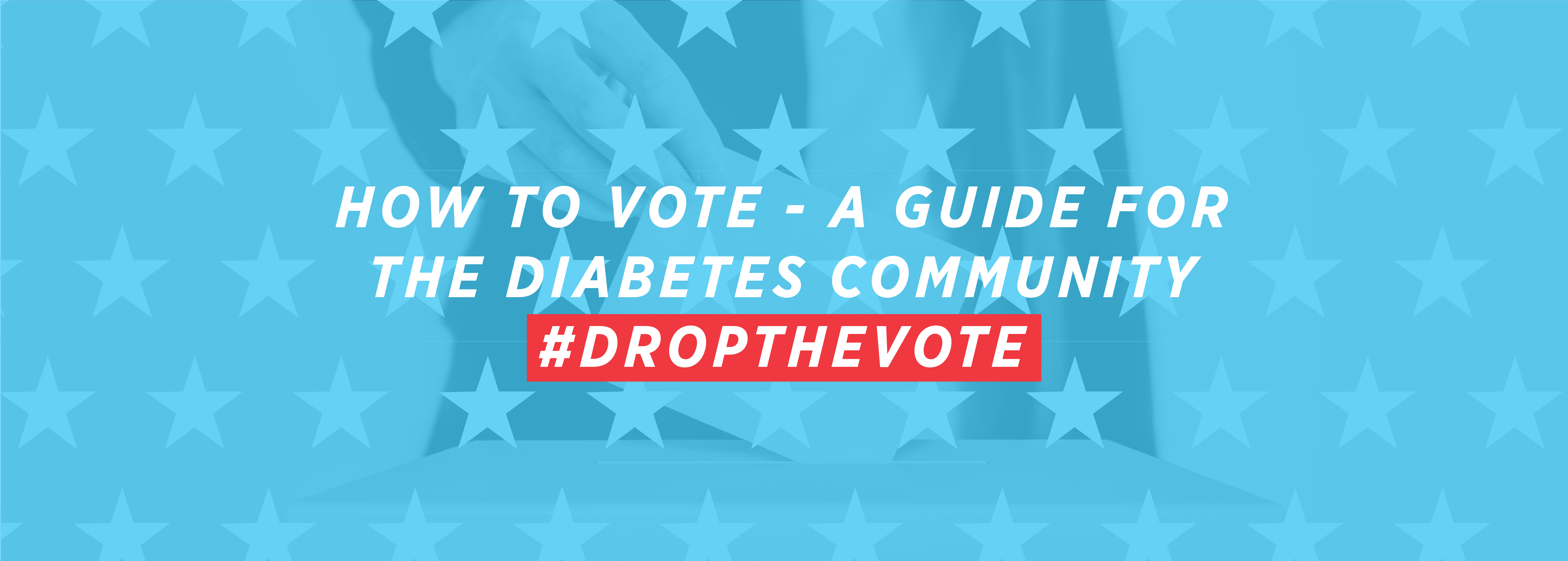The Power of the Diabetes Vote
Written by: Beyond Type 1 Editorial Team
6 minute read
August 18, 2020
Over 34 million Americans and their families are impacted by diabetes. Those more than 34 million votes add up, and every individual vote is important.
Your vote as a person impacted by diabetes can make a difference in the specific ways health policy impacts the lives of people with diabetes. Healthcare policy (like insurance legislation or drug pricing) might seem difficult to influence as one person in a large country, but voting is a direct way to apply pressure in the direction of the change you want to see. Policy changes depend on elected policy makers listening to the voices of advocates and activists. In the United States, we elect these individuals who make decisions about many issues that impact healthcare and our wellbeing.
How can we ensure that future laws and protections will help, not harm, the over 34 million families in the United States impacted by diabetes? By learning about candidates who will decide our healthcare future and then voting in local, state and federal elections.
The diabetes community is passionate and vocal; our advocacy efforts have brought forward much needed healthcare laws, protections and research funding over the past several years.
- This year, we celebrated 30 years of the Americans with Disabilities Act (ADA), which ensured rights for people with disabilities, including diabetes, when it comes to accessibility and discrimination.
- 504 Plans that enforces the rights of students with a defined disability is part of the Rehabilitation Act of 1973.
- The Special Diabetes Program funding was created in 1997 to accelerate research and must be reauthorized by Congress every two years.
- Pressure from diabetes advocacy organizations helped Medicare beneficiaries receive reimbursement for continuous glucose monitor (CGM) technology and the ability to view their data on smart devices.
- State legislators have voted on insulin access issues in several states, with many more states expected to review the concept of capping insulin and other diabetes copays to affordable levels, as well as creating state-run programs for emergency needs.
How can I learn about issues impacting people with diabetes?
Healthcare policy enacted by local, state, or federal government includes topics that impact people with diabetes, like:
- Health Insurance policies, like the Affordable Care Act
- Drug pricing reform, including insulin price cap legislation
- State Medicaid expansion
- Research budgeting, like the Special Diabetes Program
Beyond Type 1 has an extensive library of resources that include up-to-date news about diabetes issues in the United States, and a separate section on access issues with a focus on insulin pricing.
We also recommend visiting JDRF Advocacy to learn about policies and programs that are important for the type 1 community.
For a wider view of health issues (and other policies that impact people with diabetes), search out objective news sources, such as AP News and Reuters.
Doing your research is an important step to developing an informed opinion on what’s important to you as a person impacted by diabetes and how you may align with a particular political party or candidate.
Why should I bother voting for local or state candidates? They don’t do much for people with diabetes.
Not only do our local and state legislators vote on issues that impact people with diabetes, these local and state legislators may eventually represent you in Congress or even in the White House! Your vote in a local election can have long-standing implications in our government.
State legislators wield tremendous power over the health and welfare of their constituents. These elected representatives decide if certain health programs are expanded or funded (like Medicaid) and whether Diabetes Action Plans are instituted in their state.
Why should I bother voting at all? It’s not as if my vote matters.
Nothing could be farther from the truth when it comes to the power of your vote, regardless of whether you have diabetes. In 2018, a seat in the Kentucky state legislature was deemed a tie after a hand recounting of ballot, in which the first count showed a win by a single vote. Six state legislatures found themselves with representatives who were elected by less than 45 votes. Every vote really does count.
How can I learn about the candidates and issues that may be on my local ballot?
Your local county election office’s website is the first place to visit, as they will have a list of all the candidates who qualified for local, state and federal elections. Local newspapers will often publish interviews with candidates, town halls (although most are virtual this year) are held, and reviewing the candidates websites to learn about their leadership experience are all great ways to discover how the person may vote on issues important to people with diabetes.
Of course, the most direct route is by contacting the candidate and asking questions about specific issues. For candidates who would vote on funding for local or state legislation, you may find that a candidate is unfamiliar with diabetes-specific issues, which is an opportunity for you to provide education and build a relationship with the candidate of your choice if that’s something you’re up for.
Regardless of where you live in the United States, you have access to a sample ballot. These are offered by your local county election office and must be made available publicly. (Important reminder: You can’t vote using these ballots!) While there are voter guides and links to state election offices, the fastest way to get to your sample is by searching online for: “sample ballot + [your county and state]”.
What steps do I need to take to register to vote?
First, check to see if you’re registered to vote. If you are not registered to vote (or if you need to update your registration address or change your party affiliation), click here: https://vote.gov/ and register/update. Don’t forget to ask others if they’re registered—and share the links to help them register.
And thanks to the Americans with Disabilities Act, you can request a mail-in/absentee ballot due to diabetes classification as a disability. How to request that type of ballot will depend on your state. ALL 50 states and the District of Columbia have mail-in options. Explore Beyond Type 1’s guide to voting for the diabetes community.
The power of the diabetes vote is in our hands. Help our country make decisions about the future of our healthcare and our lives by learning about the issues, researching candidates and voting in all of our elections!
Explore Beyond Type 1’s guide to voting for the diabetes community.

Author
Beyond Type 1 Editorial Team
This piece was authored collaboratively by the Beyond Type 1 Editorial Team. Members of that team include Director of Content Todd Boudreaux, Director of Emerging Markets Mariana Gómez, Director of Brand Communications Dana Howe, Beyond Type 2 Project Manager T'ara Smith and Senior Project Manager Lala Jackson.
Related Resources

Election Day in the United States is November 3, 2020. How can we ensure that...
Read more

Hyperglycemia—or high blood sugar—can sneak up on you, whether it’s from a missed dose, a...
Read more

Curious about how to join a diabetes clinical trial? If so, good on ya’, because...
Read more

